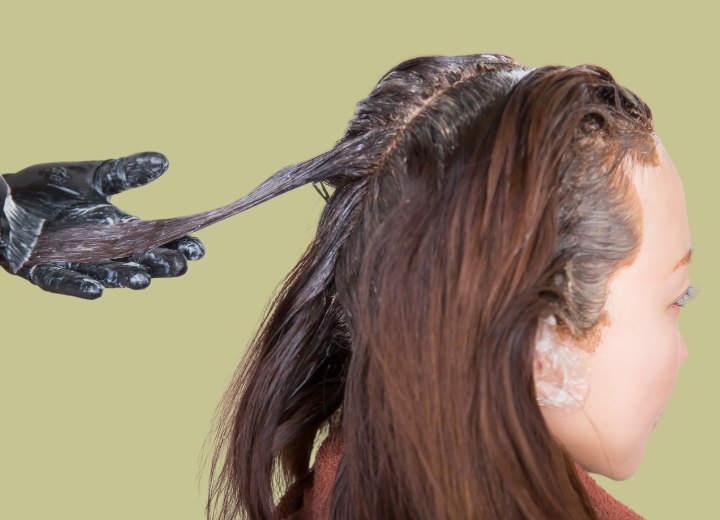Dye Bleached Hair

However, I decided to dye it to a more natural, light reddish-brown (my hair was still slightly reddish at the time). The problem is, the back is still extremely light and mousey brown, and the front retains its red color, making for an unpleasant contrast. My mother said that we would just dye it to a very dark brown, close to my original hair color, but I am still unsure.
My question is, will the back continue to be lighter even with such a dark brown color, or will it absorb evenly (as opposed to the reddish brown color), as my mother hopes? Or will I have to resort to black (or bleach, which I am very skittish about due to the amount of the damage) to get an even color? Thank you in advance.
It sounds to me as though you want to know how to balance out the preponderance of red in your hair. This can be accomplished by using a hair color formula with a base color of green. This is also called "drab" by some makers. In order to adjust the redness, select a hair color that is lighter than the color you currently have by at least 2-3 levels, and that uses the green/drab base color.
Mix the hair color using a 10-volume peroxide developer, and apply it to the hair on the reddish portions first, and then apply it to the back of the head. The result should be a brown shade that is more evenly toned without such strong dichotomy of reddish and more neutral shading.
Your concern over doing more damage to the hair is a good attitude to have. The use of 10-volume peroxide developer will make the hair color less harsh, and therefore less likely to cause damage. However, if you want to further protect the hair and help ensure even coverage, try giving yourself a deep conditioning treatment with a protein-rich conditioning crème prior to performing the application of the color (it can be done immediately before, but you want to always apply color to dry hair).
©Hairfinder.com
See also:
Hair coloring
Hair porosity
The hair bleaching process
Signs of damaged hair